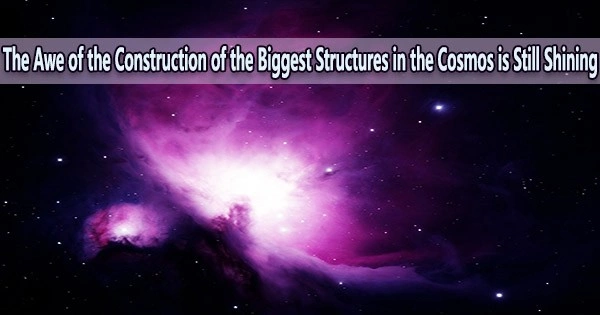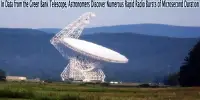The universe is organized into a web-like pattern on the biggest scales: galaxies are gathered into clusters, which are joined by filaments and divided by voids. Both ordinary matter, including as gas and galaxies, and dark matter are present in these clusters and filaments.
This network of galaxies, which scientists refer to as the “cosmic web,” is visible when we map their locations and densities using data from extensive optical telescope surveys.
We believe that magnetic fields, which are produced by energetic particles in motion and which in turn direct the motion of those particles, are also present throughout the cosmic web. According to our predictions, a filament will be drawn together by gravity, generating shockwaves that will intensify the magnetic field and result in a light that may be observed with a radio telescope.
We have for the first time seen these shockwaves around pairs of galaxy clusters and the filaments that connect them in new study that was published in Science Advances.
In the past, we have only ever observed these radio shockwaves directly from collisions between galaxy clusters. However, we believe they exist around small groups of galaxies, as well as in cosmic filaments.
There are still unknowns regarding these magnetic fields, including their strength, evolution, and contribution to the creation of the cosmic web.
Finding and analyzing this light could not only support our beliefs on the formation of the universe’s large-scale structure, but also provide insight into the nature of cosmic magnetic fields.
Digging into the noise
We expect this radio glow to be both very faint and spread over large areas, which means it is very challenging to detect it directly.
Also, because galaxies are far brighter than stars, they can obscure these weak cosmic signals. Even more challenging, the noise produced by our telescopes is typically many times stronger than the anticipated radio light.
Due to these factors, we were forced to think outside the box and employ a method called stacking in place of directly detecting these radio shockwaves. When multiple photos of dim objects are averaged together, the noise is reduced or, more accurately, the average signal above the noise is enhanced.
So what did we stack? More than 600,000 galaxy cluster pairs that are close to one another in space and are therefore probably connected by filaments were discovered. So that any radio signal from the clusters or the area between them where we anticipate the shockwaves to be would add together, we then aligned our photos of them.
We first used this method in a paper published in 2021 with data from two radio telescopes: the Murchison Widefield Array in Western Australia and the Owens Valley Radio Observatory Long Wavelength Array in New Mexico. They were selected because they operated at low radio frequencies, where this signal is anticipated to be brighter, and because they almost completely covered the sky.
In the first project, we made an exciting discovery: we found a glow between the pairs of clusters! It was challenging to determine with certainty that the signal was coming from the cosmic magnetic fields as opposed to other sources like galaxies because it was an average of numerous clusters, each of which contained numerous galaxies.
A ‘shocking’ revelation
Normally the magnetic fields in clusters are jumbled up due to turbulence. Yet, because these shock waves organize the magnetic fields, the radio light they produce is strongly polarized.
We decided to try the stacking experiment on maps of polarized radio light. This has the advantage of helping to determine what is causing the signal.
Signals from regular galaxies are only 5% polarized or less, while signals from shockwaves can be 30% polarized or more.
In our latest work, we repeated the experiment using radio data from the Global Magneto Ionic Medium Survey and the Planck satellite. These surveys have polarized and conventional radio maps, and they almost entirely cover the sky.
We detected very clear rings of polarized light surrounding cluster pairs. This means the centers of the clusters are depolarised, which is expected as they are very turbulent environments.
Yet, the shockwaves cause the magnetic fields on the cluster’s edges to reorganize, which is why we can see this ring of polarized light.
In addition, we discovered more highly polarized light between the clusters than what would be predicted from merely galaxies. This appears to be light coming from shocks in the connecting filaments. This is the first instance of such an emission being discovered in this kind of setting.
We compared our findings to the most recent cosmological simulations, which were the first of their sort to forecast both the polarized and total radio emission signals. We can explain the magnetic field signature left behind from the early cosmos by combining our data with these simulations, which showed excellent agreement with our observations.
In the future, we want to repeat this discovery at various points in the universe’s history. Although the origin of these cosmic magnetic fields is yet unknown, more discoveries like this one can shed light on their origin and evolution.
















